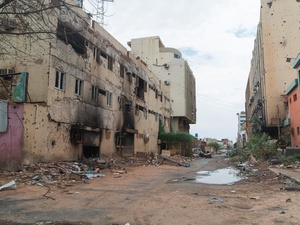Syria emergency
Syria emergency
An offensive by armed groups on 27 November 2024 led to the overthrow of the former government on 8 December, sparking hopes for an end to the world’s largest displacement crisis alongside uncertainty over the country’s immediate future.
Before these dramatic events, 12.3 million people remained displaced inside Syria and in neighbouring countries following more than 13 years of crisis.
Countries affected: Egypt | Iraq | Jordan | Lebanon | Syrian Arab Republic | Türkiye

people in need of humanitarian and protection assistance in Syria
internally displaced people
Syrian refugees registered in neighbouring countries: Türkiye, Lebanon, Jordan, Iraq and Egypt
The changing landscape of Syria with rising returns, persistent violence, and regional refugee pressures
The fall of the Assad government in December 2024 marked a major turning point in Syria, creating new opportunities for peace and recovery but also triggering complex displacement patterns. As of mid-November 2025, Syrians remain one of the largest refugee populations globally, with 4.5 million registered refugees hosted in Egypt, Iraq, Jordan, Lebanon, and Türkiye. Since the regime’s collapse, over 1.2 million Syrians have returned to the country, alongside 1.9 million internally displaced persons (IDPs) who have gone back to their areas of origin. However, violence persists, particularly in coastal areas such as Latakia and Tartus, and in As-Sweida Governorate, which saw the largest wave of displacement in the south since 2018.
Humanitarian access has been severely restricted due to insecurity, road closures, and disruptions to power and communication networks. Lebanon has received approximately 108,000 new arrivals since December 2024, many facing acute protection risks and precarious living conditions. In northeast Syria, Al-Hol and Al-Roj camps continue to host over 28,000 individuals in volatile conditions, requiring sustained humanitarian assistance until durable solutions are found.
Despite some returns, conditions inside Syria—such as safety, housing, livelihoods, and access to services—remain significant barriers to sustainable reintegration. Meanwhile, refugees in host countries face restrictive policies, limited employment opportunities, and growing social tensions, making continued support essential.
UNHCR stands ready to support Syrians wherever they are. We urge all parties to act now to ensure this moment becomes a turning point toward hope, recovery, and lasting peace and stability for the Syrian people.
What is UNHCR doing to help?
UNHCR has expanded its support to returnees and IDPs inside Syria, focusing on protection, housing, civil documentation, and basic assistance. It operationalized the 2025 Voluntary Return Operational Framework to guide principled assistance for refugees and IDPs, implementing community-based projects in key return areas and expanding legal aid services to address documentation gaps.
UNHCR works closely with the UN Resident Coordinator’s Office and other agencies on solutions for residents of Al-Hol and Al-Roj camps, including reintegration, and co-leads a Damascus-based Task Force to coordinate efforts.
In 2026, UNHCR will continue reinforcing border and protection monitoring, maintaining a strong field presence despite security challenges, and producing analytical updates to inform planning and advocacy. At the regional level, UNHCR will advocate for Syrians’ right to seek asylum, call for sustained support to host countries, and promote inclusive approaches that strengthen national systems and durable solutions.
Through the Regional Refugee and Resilience Plan (3RP), UNHCR will work with humanitarian and development actors to maintain assistance for refugees in host countries, recognizing that most will remain there in the medium term. UNHCR will also support safe, voluntary, and dignified returns, while addressing barriers to reintegration through investments in housing, livelihoods, and basic services.









